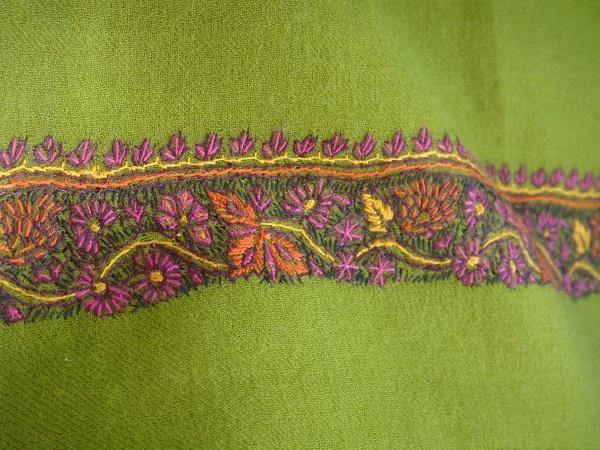
Wrap the warmth of pashmina
Nature has bestowed us with its bountiful gifts but we often tend to overlook them. Undaunted by our outlook, it continues to spread its smile through these bounties, without expecting anything in return except for the respect of Mother Nature.
Engrossed in these thoughts, i was intrigued by the colorful paisley leaves embroidered on the shawl that I have snuggled. I started pondering on its journey, which led me to discover numerous things which i would like to share with you all. So first of all, lets get to know :-
1) Different types of fiber used for making Shawl:-
a) Pashmina:-
The shawls are generally made of either wool or pashmina. The word Pashmina is derived from the word "Pashm" which means soft , fine wool. Synonymously referred to as "Cashmere" in the International market.
This fiber is taken from the goat known as "Changthangi alias Changra" goats with the scientific name as Capra Hircus. These goats are reared by the Changpa nomads in Changthang region of Greater Ladakh at the altitude of more than 4000 meter above sea level. Approximately 30,000 kg of pashmina fiber is collected every year from this region. Thickness of the pashmina strand is about 12 micron whereas of premium sheep's wool such as Merino Extra fine is of 23 micron and human hair is of about 200 micron.
b) Pure Wool:-
Other fiber used for shawl making is pure wool, also known as Raffal. The wool count is like 40, 60, 80 etc. The higher the count, more is the cost.
c) Shahtosh:- Now a banned product, is derived from the Tibetan antelope called Chiru. Persian meaning of Shahtosh is "King of fine wools". Also known as "Ring Shawl", its grandeur lies in its lightness, softness and warmth. Unfortunately, inhuman practice to satiate our greed, has made this animal an endangered specie.
2) Process:-
With the onset of spring, these goats shed their winter coat naturally. And these strands are gathered by combing them. As it's a very laborious process, is often replaced by Shearing.
Once these hair are collected, sorting of raw pashmina is done according to quality and length of fiber, followed by the removal of physical impurities. Later on it’s washed in plain water. And then carding is done, which means to prepare the yarn for spinning. In this, the entangled fibers are separated and straightened manually using two wooden combs. After Spinning and weaving, it’s time for dying them with the natural compounds.
Finally, it lands at the hands of the skilled craftsmen to create the magic spell with the colorful threads. The intricate designs leave you spellbound.
3) Various types of embroidery:-
a) Ari :- which is done using a hook called as Ari. It is either handmade or machine made. And to know the difference, just turn around the side, if there are thread knots, its handmade and if it’s very clean at the back, then its machine made.
b) Sozni:- Using fine needles, the patterns are made and might involve more than 1 person for embroidery. And it might take a month or a year depending upon how intricate the design is.
c) Kani:- The designs are created using wooden needles also known as Kani, referring to the set pattern mentioned on a piece of paper known as 'taleem-e-kakud’ and it’s language can only be interpreted by taran-guru.
d) Kalam Kari:- This exquisite art is created by hand-painting using natural dyes and the sozni embroidery.
e) Tilla:- The gold or silver thread is used to create the jaw dropping patterns and thus giving it an exclusive look.
f) Solid Shawls:- These are the plain shawls with the blend of Pashmina-Wool ( also known as Semi- Pashmina) or Pashiman-Silk.
So, next time when you take out this art piece from your closet, take a moment to appreciate it, it will cost you nothing :)
Pay a gratitude to those unknown hands who have crafted this heirloom collection for you.
Join IndicHues in spreading the happiness.
